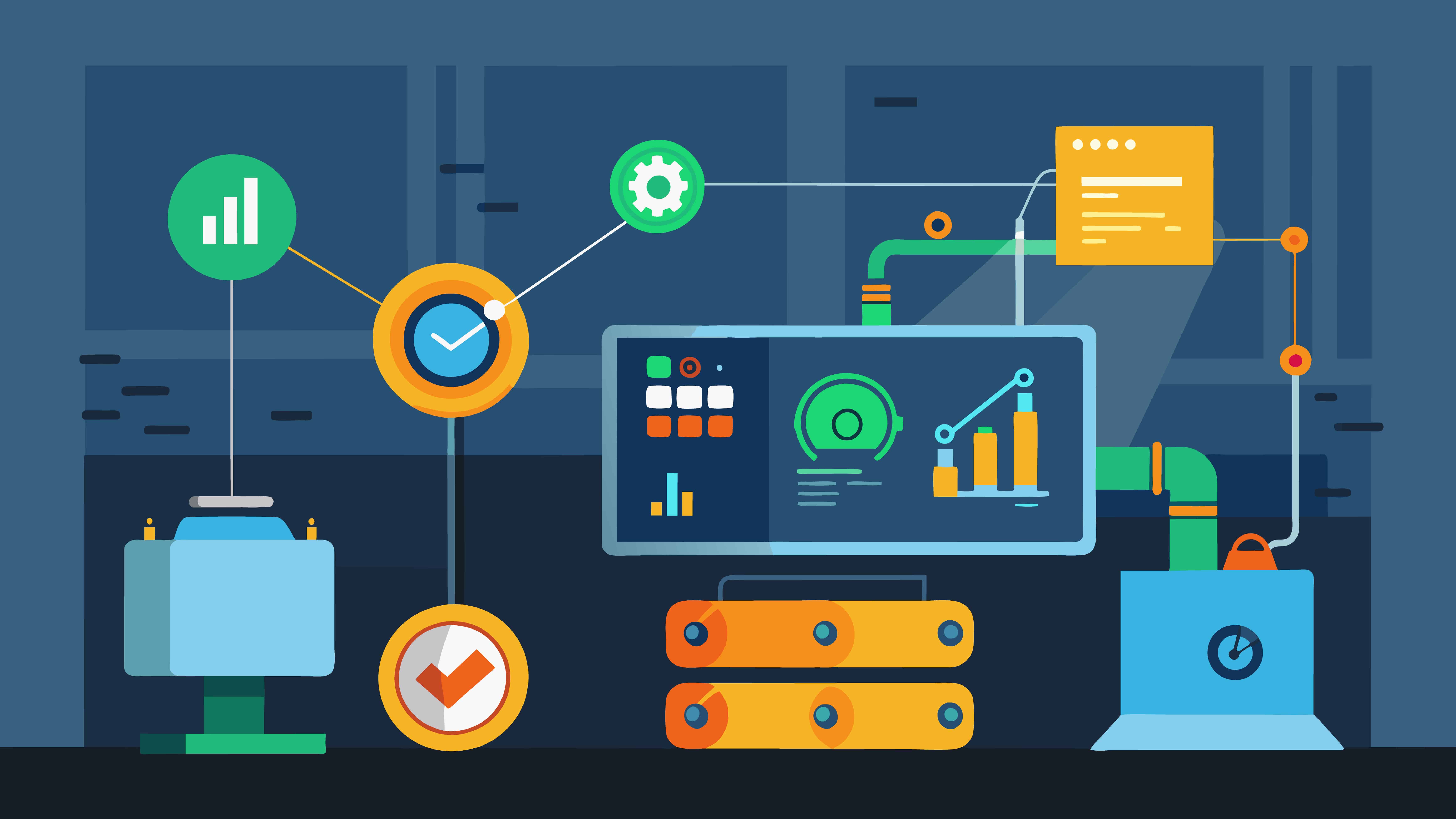What is an IT Asset Management System?

Managing a business involves keeping track of both tangible and intangible assets over time, which may include physical items like machinery, equipment, vehicles, or inventory, as well as intangible assets such as software licenses, patents, or intellectual property. As a company grows, its asset portfolio expands, leading to an increased number of people interacting with these assets daily.
An asset management system provides a structured approach to monitoring, tracking, and managing an organization’s assets to enhance productivity, minimize equipment failures, ensure compliance, boost customer satisfaction, and maintain employee safety.
Main Objective of an IT Asset Management System
The primary goal of an IT asset management system is to offer complete visibility and control over an organization’s assets, enabling efficient planning, utilization, maintenance, and disposal. This usually involves specialized tools or software to collect, store, and analyse data related to the assets, such as their location, condition, maintenance records, depreciation, and other important details.
How Does an IT Asset Management System Work?
A comprehensive asset management system integrates various components across different aspects of a business, often requiring collaboration among multiple teams. Key functions of a robust asset management system include:
- Asset Tracking: Uses unique identifiers like barcodes or RFID tags to track equipment and keep accurate records.
- Maintenance and Scheduling: Enables scheduling of regular inspections, repairs, and maintenance tasks to optimize asset performance and longevity.
- Asset Lifecycle Management: Manages the entire asset lifecycle, from acquisition to disposal, including procurement, depreciation tracking, and replacement planning.
- Asset Utilization and Optimization: Provides insights into asset availability, utilization rates, and performance to optimize allocation.
- Compliance and Risk Management: Helps ensure regulatory compliance, monitors risks, and maintains audit-ready documentation.
- Reporting and Analytics: Generates reports on asset usage, maintenance costs, depreciation, and other metrics, aiding in strategic decision-making.
These functions work together to boost efficiency, reduce costs, ensure compliance, minimize downtime, and enable data-driven decision-making.
What is Asset Management Software?
Asset management software is a tool designed to facilitate the tracking, monitoring, and management of a company’s assets. Key features often include multi-site tracking capabilities, inventory management, preventive maintenance scheduling, asset utilization analytics, and advanced reporting dashboards.
Types of Asset Management Software
Asset management software varies based on the size and industry of the organization. Common types include:
- Enterprise Asset Management (EAM) Software: Designed for large enterprises, EAM software tracks, manages, and analyses asset performance across multiple sites.
- Computerized Maintenance Management System (CMMS): Focuses on automating maintenance tasks, improving equipment reliability, and maintaining regulatory compliance.
- IT Asset Management (ITAM) Software: Tracks and manages digital assets such as hardware, software licenses, and digital documents.
- Facility Management Software: Manages assets related to buildings and infrastructure, focusing on maintenance, space optimization, and energy management.
- Inventory Management Software: Tracks stock levels, manages warehouse operations, and records inventory.
Benefits of Using IT Asset Management System
Organizations, especially large ones, can benefit significantly from IT asset management system. Here are some key advantages:
- Improved Asset Visibility: A centralized database allows tracking of assets, providing easy access to location, status, maintenance history, and more.
- Enhanced Efficiency and Productivity: Automates workflows and eliminates manual tracking, reducing human errors and administrative burdens.
- Cost Savings: Helps optimize asset usage, schedule preventive maintenance, and extend asset lifecycles to reduce unnecessary expenses.
- Regulatory Compliance: Assists in maintaining accurate records and generating reports to meet industry regulations.
- Data-Driven Decision-Making: Provides valuable analytics for informed decisions on maintenance strategies and asset investments.
- Scalability: Easily accommodates new assets and scales with the organization’s growth.
Key Features to Look for in Asset Management Software
- When selecting asset management software, it’s essential to ensure it has the necessary features to meet your organization’s needs:
- Centralized Asset Database: A unified location for storing all asset-related data.
- Asset Auditing and Reconciliation: Tools for regular audits to identify discrepancies and track assets accurately.
- Mobile Access: Enables on-the-go asset tracking, inspection, and data updates.
- Customizable Dashboards and Reports: Allows visualization of asset data based on role-specific requirements.
- Role-Based Access Control (RBAC): Restricts sensitive information access to authorized personnel.
- Predictive Maintenance Capabilities: Uses AI and IoT data to forecast asset failures.
- Integration with Other Systems: Ensures seamless data flow by integrating with ERP, financial management, or HR systems.
- Vendor Management: Tracks vendor information, service agreements, and warranties.
Understanding the Asset Lifecycle
The asset lifecycle encompasses all stages an asset goes through, from initial acquisition to disposal. The phases include:
- Planning and Acquisition: Identifying the need, budget constraints, and procurement options.
- Deployment and Utilization: Deploying the asset and tracking its usage and performance.
- Maintenance and Upgrades: Performing regular maintenance and updates to extend asset life.
- Depreciation and Revaluation: Tracking value changes for financial reporting and tax purposes.
- Disposal or Replacement: Retiring or replacing assets at the end of their useful life.
Best Practices for Implementing Asset Management Software
To maximize the benefits, follow these best practices during implementation:
- Define Clear Goals and Objectives: Establish what you want to achieve, such as reducing downtime or optimizing maintenance schedules.
- Conduct a Thorough Asset Inventory: Perform a comprehensive inventory to establish a baseline and identify gaps.
- Train Employees Thoroughly: Provide training to ensure employees know how to use the software effectively.
- Establish Standard Operating Procedures (SOPs): Develop SOPs for managing various asset types and processes.
- Monitor and Optimize Usage: Regularly review system usage and update workflows as needed.
- Leverage Automation Where Possible: Automate alerts for maintenance schedules and compliance checks to boost productivity.
Real-World Examples of Asset Management Success
- Manufacturing Industry: A manufacturing company used EAM software to reduce downtime by 30% through predictive maintenance.
- Healthcare Sector: A hospital implemented ITAM software to track medical equipment and reduce asset loss, saving significant costs.
- Energy and Utilities: An energy company utilized a CMMS system to automate work order management and achieved a 40% reduction in unplanned maintenance.
Emerging Trends in Asset Management Software
- Internet of Things (IoT) Integration: Real-time asset condition monitoring through IoT devices optimizes maintenance schedules.
- Artificial Intelligence (AI) and Machine Learning (ML): AI-powered systems offer predictive maintenance by forecasting asset failures.
- Blockchain for Asset Tracking: Blockchain ensures transparent and tamper-proof asset transaction history.
- Cloud-Based Solutions: Many organizations are opting for cloud-based systems for easier scalability and remote access.
Choosing the right asset management tool for your organization requires a thorough evaluation of your unique needs, budget constraints, and long-term objectives. Rather than focusing solely on the quantity of features, prioritize finding a solution that closely aligns with your specific business requirements. The best tool should seamlessly integrate into your operations and address your key pain points.
Curious if asset management 365 is the right ITAM solution for your organization? Contact us today, and we’ll be glad to help you out in this!
Frequently Asked Questions
1. What industries benefit the most from IT asset management system?
Industries with significant physical assets, such as manufacturing, healthcare, energy, logistics, and IT, benefit greatly from IT asset management system.
2. Can small businesses benefit from IT asset management systems?
Yes, IT asset management system can help small businesses track assets efficiently, reduce maintenance costs, and ensure compliance.
3. How does IT asset management system help in regulatory compliance?
The software maintains records for audits, tracks maintenance schedules, and helps ensure safety standards are met.
By following these guidelines and understanding the benefits, features, and best practices of asset management systems, organizations can make informed decisions to improve asset tracking and maximize the value of their assets.
























